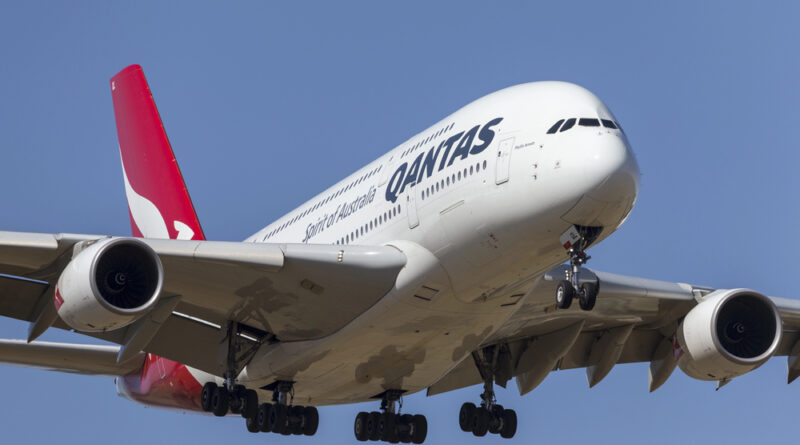Stop Blaming Hackers Start Fixing People: How a Single Phone Call Cracked Qantas and What It Means for the Rest of Us
If the past two years have taught Australia anything about cybersecurity, it is this: the attacker’s most reliable entry point is not a zero-day exploit or some Hollywood ransomware kit. It is a helpful human on the other end of a phone.
That uncomfortable truth landed in our inboxes again this week when Qantas confirmed that up to six million frequent-flyer records were siphoned through an offshore IT help-desk. The thieves didn’t need to brute-force a firewall or reverse-engineer airline software; they simply convinced somebody to open the door.
The High-Tech Con That Never Went Away
“Social engineering” sounds like a new discipline cooked up by Silicon Valley, but it predates the internet. Phishing emails have long preyed on our fears and curiosities, yet voice phishing—or “vishing”—remains the gold standard for intruders who need privileged access fast. Pick up the phone, learn enough jargon to sound like internal tech support, and you can talk even seasoned staff into resetting multi-factor authentication or forwarding a one-time passcode.
Easy-to-use artificial-intelligence tools now turbo-charge this hustle. Anyone with a modest budget can clone a colleague’s voice, scrape their LinkedIn profile for lingo and dial the service desk in flawless corporate vernacular. In a few minutes the attacker has the keys to a third-party vendor, and from there the blast-radius multiplies.
Qantas Is a Warning, Not an Outlier
Optus, Medibank, Latitude, DP World, the $4 trillion superannuation sector—the list of Australian giants popped by human-factor hacks reads like the ASX-50. Regulators have noticed. The Office of the Australian Information Commissioner reported that social-engineering breaches rose sharply in late 2024, with government, finance and health agencies topping the casualty table. Meanwhile the prudential watchdog APRA has been flashing red lights at banks and super funds, urging them to harden their MFA and vendor-risk programs before the next credential-stuffing spree drains more retirement balances.
Qantas matters because aviation is critical infrastructure; planes don’t fly without functioning IT and passengers don’t travel without identity verification. But the airline is simply the latest domino. Healthcare clinics, deep-water ports, telcos, logistics warehouses—every sector that outsources tech support or relies on sprawling supplier networks is exposed.
The Human OS Is Out of Date
Why does the same playbook keep working? Because the defensive conversation still begins and ends with “awareness training.” PowerPoint reminders to “think before you click” do little when an employee is confronted by a frantic voice claiming the CEO’s email has gone dark and revenue is on the line. Humans are wired to be helpful under pressure; attackers weaponise that reflex.
Boards and executives need to admit that the human operating system will always carry a buffer-overflow flaw called trust. The job of modern security programs is to limit the damage when—not if—that flaw is exploited.
Four Things Corporates Must Do Now
-
Kill standing privileges. No help-desk agent needs perpetual admin rights. Grant narrow, time-boxed access for each support ticket and revoke it automatically. Attackers can’t escalate what they can’t inherit.
-
Adopt real-time behavioural MFA. Traditional OTP codes are no longer enough. Adaptive authentication that checks device posture, location anomalies and voice biometrics can flag suspicious resets even if a call sounds legitimate.
-
Instrument the vendor chain. Third-party risk questionnaires are checkbox theatre. Demand that offshore call centres and cloud partners expose API hooks or audit logs so anomalies propagate up the chain within minutes, not days.
-
Practice muscle-memory drills. Table-top exercises may satisfy auditors, but only red-team simulations that call the actual service desk will reveal how staff behave under genuine pressure. Fail in rehearsal, fix the script, and try again.
From Reactive to Accountable
Cybersecurity still leans heavily on reactive language—incident response, breach disclosure, damage control. That mindset seeps into organisational culture, framing ransomware events as natural disasters to be mopped up rather than systemic failures to be prevented.
The better model is safety engineering. Airlines know how to do this in the physical world: every maintenance record, fuel reading and cockpit alarm feeds a safety management system where lessons become mandatory procedure. The same discipline must apply in cyberspace. Each social-engineering success should trigger a root-cause analysis that ends with a measurable control, not a stern email.
The Stakes Are Growing
Every fresh breach dumps more personal data onto dark-web bazaars, building richer dossiers for the next wave of scams. The cost is not just reputational; it erodes public trust in digital services. Eventually citizens will balk at online banking prompts or refuse to sign up for digital-health IDs, hobbling the very efficiencies we rely on.
Australia’s mandatory reporting regime has dragged ugly truths into daylight. Now comes the harder part: enforcing consequences. Penalties need to escalate when organisations ignore basic hygiene like patched VPNs or robust MFA—not out of vindictiveness, but to nudge laggards into the economic calculus already embraced by the banks and cloud giants: security is cheaper than recovery.
A Collective Responsibility
Consumers also play a role. Use a password manager, turn on MFA wherever it exists, and be sceptical of unexpected calls requesting credentials—even if the caller pronounces your last flight number perfectly. But responsibility ultimately rests with the entities collecting and monetising our data.
One phone call should never be enough to compromise millions of identities, yet history says it often is. Until boards treat that reality with the same gravity they reserve for financial audits, the social-engineered breach will remain Australia’s most predictable scandal.
Photo Credit: DepositPhotos.com

